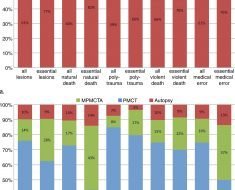
Regular use of chemical disinfectants among nurses may be a risk factor for developing chronic obstructive pulmonary disease (COPD), according to a study published online Oct. 18 in JAMA Network Open.
Orianne Dumas, Ph.D., from VIMA-Aging and Chronic Diseases, Epidemiological and Public Health Approaches in Villejuif, France, and colleagues used data from the U.S. Nurses’ Health Study II. An analysis examining the association between disinfectants (irritant chemicals) and risk for COPD included 73,262 women who were still in a nursing job and had no history of COPD in 2009; follow-up data were available through 2015. Occupational exposure to disinfectants was determined by questionnaire and a job-task exposure matrix.
The researchers found that 582 nurses reported incident physician-diagnosed COPD. COPD incidence was associated with weekly use of disinfectants to clean surfaces only (22.9 percent of participants exposed; adjusted hazard ratios [aHR], 1.38) and to clean medical instruments (19.0 percent exposed; aHR, 1.31). Results included adjustments for age, smoking (pack-years), race, ethnicity, and body mass index. High-level exposure to specific disinfectants (e.g., glutaraldehyde, bleach, hydrogen peroxide, alcohol, and quaternary ammonium compounds) was significantly associated with COPD incidence (aHR range from 1.25 to 1.36). Smoking and asthma status did not modify associations.
Source: Read Full Article





